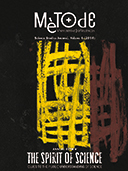Conservation genetics: Applying evolutionary concepts to the conservation of biological diversity
DOI:
https://doi.org/10.7203/metode.78.2452Keywords:
genetic drift, inbreeding, extinction vortex, effective population size Abstract
Abstract
Greater understanding of the forces driving evolutionary change and influencing populations, together with the latest genetic analysis techniques, have helped conserve of biodiversity for the last twenty years. This new application of genetics is called conservation genetics.
 Downloads
Downloads
 References
References
Allendorf, F. W.; Luikart, G. and S. N. Aitken, 2013. Conservation and the Genetics of Populations. 2nd edition. Wiley-Blackwell Publishing. Malden, USA.
Benito, C. and F. J. Espino, 2012. Genética, conceptos esenciales. Editorial Médica Panamericana. Madrid.
Frankham, R.; Ballou, J. D. and D. A. Briscoe, 2010. Introduction to Conservation Genetics. 2nd edition. Cambridge University Press. Cambridge.
Menotti-Raymond M. and S. J. O’Brien, 1995. «Evolutionary Conservation of Ten Microsatellite Loci in Four Species of Felidae». Journal of Heredity, 86(4): 319-322.
Oldenbroek, J. K., 1999. Genebanks and the Conservation of Farm Animal Genetic Resources. DLO Institute for Animal Sciences and Health. Lelystad, the Netherlands.
Toro, M. A., Fernández J. and A. Caballero, 2009. «Molecular Characterization of Breeds and Its Use in Conservation». Livestock Science, 120: 174-195. DOI: <10.1016/j.livsci.2008.07.003>.
Vargas, A., 2009. Conservación Ex-situ del Lince Ibérico: Un Enfoque Multidisciplinar. Fundación Biodiversidad. Madrid. Available at: <http://www.lynxexsitu.es/ficheros/documentos_pdf/37/bookexsituvargas2009_3.pdf>.
Published
How to Cite
-
Abstract941
-
PDF257
-
PDF (Español)1612
-
PDF (Català)166
Issue
Section
License
![]()
All the documents in the OJS platform are open access and property of their respective authors.
Authors publishing in the journal agree to the following terms:
- Authors keep the rights and guarantee Metode Science Studies Journal the right to be the first publication of the document, licensed under a Creative Commons Attribution-NonCommercial-NoDerivatives 4.0 International License that allows others to share the work with an acknowledgement of authorship and publication in the journal.
- Authors are allowed and encouraged to spread their work through electronic means using personal or institutional websites (institutional open archives, personal websites or professional and academic networks profiles) once the text has been published.





